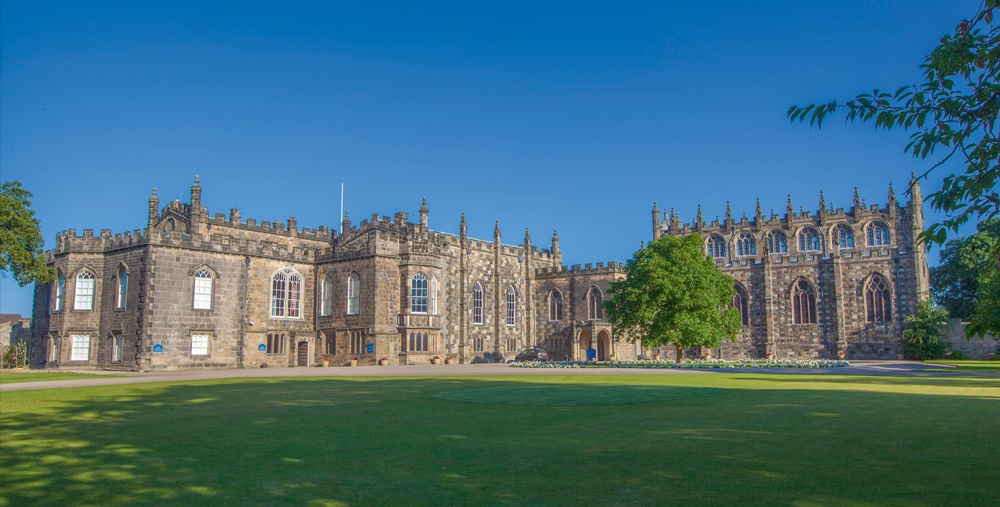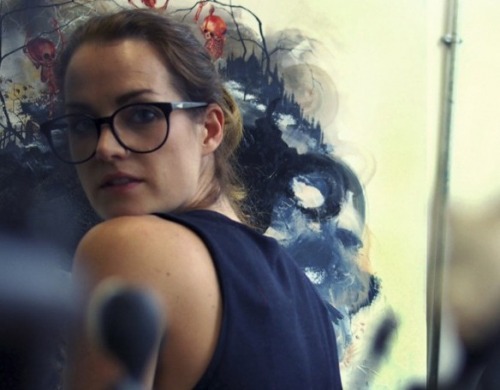The Man With A Plan

Jonathan Ruffer is an interesting character. If you haven’t heard of him, he’s the one who bought a castle and 12 paintings in Bishop Auckland. Now he’s fixing the castle up (or paying people to fix it up) so the public can come along and see the paintings. He also wants to open a religious exhibition and picture gallery. He might build a historical theme park nearby too. It should all cost around £160 million. He’s not mad, but he is rich.
‘Everybody has their funny little ways don’t they,’ he says.
Like we said, he’s a character. He’s actually from the North East, though you might not tell from his accent. His mum was in the Women’s Royal Naval Service and his dad was in the Royal Marines (‘He was a gunnery officer,’ explains Jonathan. ‘When I was young I discovered he had a hand in the sinking of the Bismarck. When he got into his nineties I discovered he did it single-handedly. If he’d lived to be 105 I’d have discovered he had won the entire war’). While Jonathan’s dad’s ship was being repaired on the Tyne he met Jonathan’s mum, who lived in Jesmond, and they got married.
Then came Jonathan. He says he doesn’t remember how old he is, but he does know he was was born in a clinic in London in 1951 (and while he was being born the composer Constant Lambert was busy dying in the room next door). The family was living in London then, but in 1953 they moved to Stokesley, where Jonathan went to Aysgarth prep school, before going to Marlborough after which he went to Cambridge University to read English, before starting his career in London.
‘I was stockbroker first,’ he says.
But it didn’t last long
‘I had written a book on Edwardian shooting parties,’ he throws in. ‘That turned out to be bestseller.’
The book was called The Big Shots and the money he earned from it enabled him to pursue another interest.
‘I trained as a barrister.’
That didn’t last long either.
‘I thought I’d be a good barrister,’ he offers. ‘I can’t stop talking, but I discovered I was awful at it so I gave it up.’
He returned to the City and worked as a fund manager, which he was good at, so he set up his own firm. He is (according to the Financial Times) one of the City’s wealthiest financiers, and (according to the Telegraph) he predicted the Credit Crunch.
‘It’s like everything else,’ laughs Jonathan, ‘If you predict a hundred things you get three of them right, then you boast about them.’
So he did get it right?
‘Yes. A veil of secrecy over the rest.’
Around then he heard that the Church Commissioners, who manage the finances of the Church of England (Jonathan is an Anglican), were selling a dozen 17th-century paintings by Spanish artist Francisco Zubaran, which were hung in Auckland Castle (the private dwelling of the Bishop of Durham) in Bishop Auckland. Jonathan had never visited Bishop Auckland, but he knew about the paintings and he thought they should stay in the region. So in 2012 he bought the castle and paintings for £11 million.
‘I hadn’t even seen them when I made the offer,’ he says.
The paintings were given to a trust, which has also been charged with maintaining the paintings, restoring the castle, and ensuring it is all open to the public for future generations. He describes it as a symbolic act, but also one that will have a regenerating effect on the area.
‘To do it in such a way that it would bring an economic benefit to the town seemed to me like an imaginative way of helping the North East,’ he enthuses. ‘That’s why I did it.’
He’s not finished though. He sold his house in Essex in 2012 and moved into a rented property while the castle’s gatehouse was converted from a ruin to a home. That was done by 2013, which is when he moved into the gatehouse with his wife – ‘She’s a good girl, so she’s all for it’. Now he wants to get on with further regeneration, which means more money (from him and others, including £10 million from the Heritage Lottery Fund).
The core of the project is restoring the castle, but he’s also creating an exhibition at the site about the history of the Christian and Jewish faiths in England. It’s an idea that was suggested to him by Neil MacGregor, the Director of the British Museum. There will also be a picture gallery with loaned paintings, which is being supported by Santander. The walled garden and medieval park surrounding the castle are being renovated, and there will be a welcome centre. It’s costing £60 million in total and should be ready by 2018, creating 130 full-time jobs.
He’s also got plans for a neighbouring site called Eleven Arches (which is crossed by a railway viaduct with 11 arches). From 2016 he wants the 115-acre patch of land to host 30 evening shows each year, featuring historical reenactments, projections, music, pyrotechnics, and a cast of 600 local volunteers. That’ll cost £20 million (he’s put £2 million in himself and the rest is coming from grants). If the shows go well he also wants to build an £80 million historical theme park on the same site.
‘The thing about a night show is it’s pretty inconvenient to have to come to Bishop Auckland, twiddle your thumbs all day, have a great time at night and then leave,’ he explains. ‘But if you can make it so there’s a daytime offering as well, which is what the French have done, that really will bring people to the area.’
The idea is based on the Puy du Fou in the Vendée region of France (which wasn’t very prosperous). In 1978 they started hosting night shows telling historical stories, and now each production involves around 3,400 volunteers, and they’ve also built a historical theme park, which has won awards and attracted millions of visitors. Jonathan has formed a partnership with the French organisers and the hope is Bishop Auckland’s theme park will be open by 2020. As we said, Jonathan is quite a character, and very ambitious.
No doubt some of his old investment contacts in London (he still has an office in the capital and spends the first half of each week down there) have raised their eyebrows about what he’s up to in Bishop Auckland, but it doesn’t bother Jonathan in the least.
‘I think there’s a general feeling that this is just one more step in a series of madcap things,’ he says. ‘I don’t really know, I think I lead a fairly pedestrian life.’
A week after being interviewed he bought a Roman site at Binchester near Bishop Auckland for £2 million. Very pedestrian.







